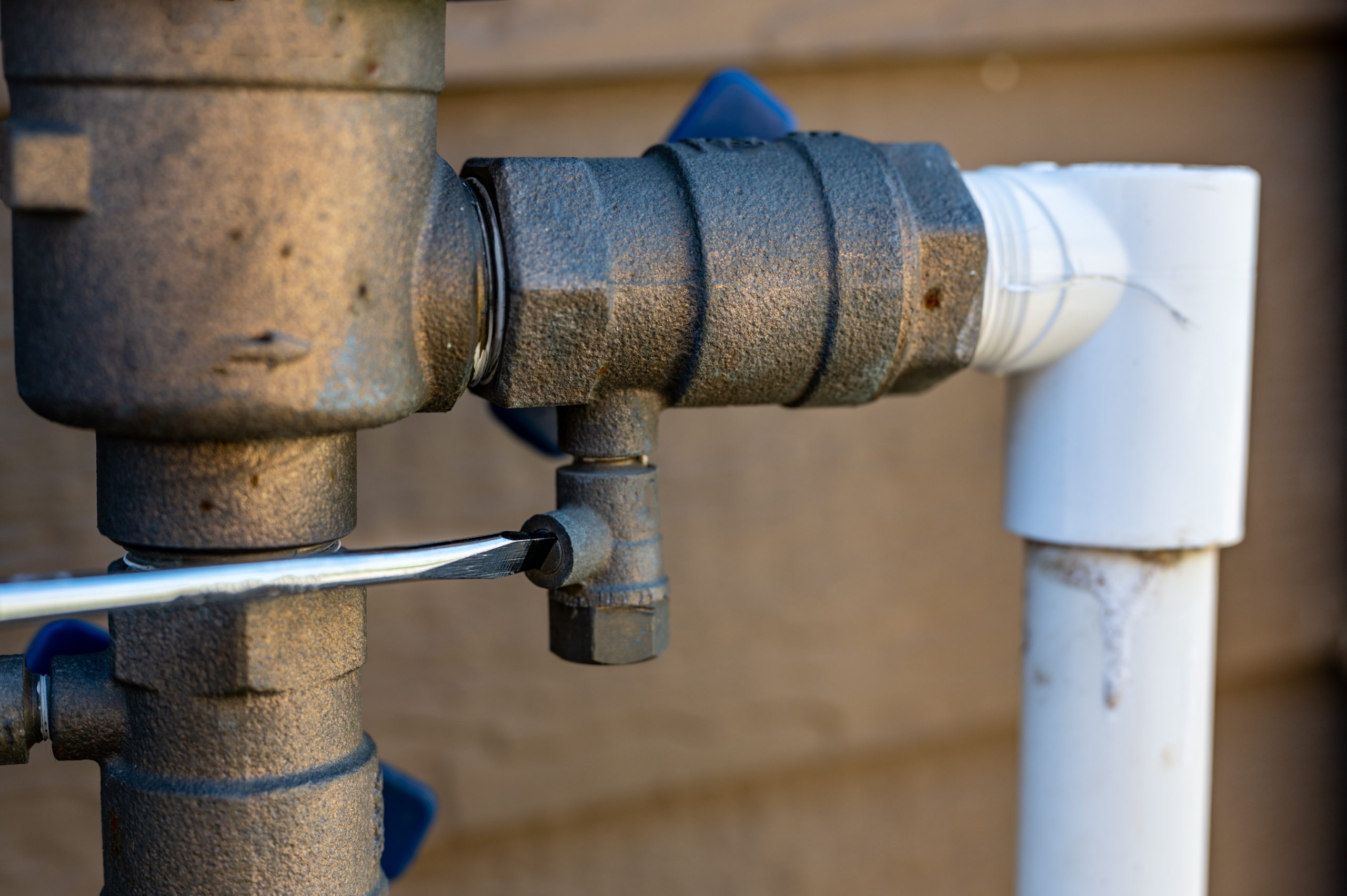In our daily lives, we often take the safety and cleanliness of our water supply for granted. We turn on the tap and expect clean, potable water to flow out. But what ensures the purity of this water? How do we prevent contamination from various sources? The answer lies in a critical process known as backflow testing.
Backflow testing is a specialized procedure performed by certified professionals to safeguard our water systems. It involves a thorough examination of backflow preventers, devices designed to stop water from flowing in the wrong direction. Without these preventers, there’s a risk that contaminated water could flow back into our clean water supply, leading to serious health and environmental consequences.
This article delves into the intricacies of backflow testing, exploring its importance, the mechanisms involved, and the regulations that govern its implementation. Whether you’re a homeowner, a business owner, or simply someone interested in understanding how our water systems are kept safe, this comprehensive guide will shed light on the crucial role of backflow testing in maintaining the quality of our water.
Understanding Backflow Testing
Backflow testing is conducted by certified plumbing professionals to ensure the safety and purity of our water supply. It’s a critical part of maintaining the integrity of our water systems, but to fully appreciate its importance, we need to understand what backflow is and how it can impact our health and environment.
Backflow is a plumbing term that refers to the unwanted reversal of water flow in a system. Under normal circumstances, water should flow in one direction from the public water supply system to our homes or businesses. However, certain conditions can disrupt this flow, causing water to move in the opposite direction. This is what we refer to as backflow.
When backflow occurs, there’s a risk that contaminated water from non-potable sources can enter the clean water supply. This can happen due to a variety of reasons, such as a sudden drop in water pressure, a water main break, or heavy water usage in the local area. The result is a cross-connection between clean and contaminated water sources, which can pose serious health risks if not addressed promptly.
This is where backflow testing comes into play. Backflow testing is a process that checks the functionality of backflow preventer devices installed in your plumbing system. These devices are designed to stop water from flowing in the wrong direction, thus preventing any potential contamination of the clean water supply.
During a backflow test, a certified professional will inspect your backflow preventer to ensure it’s working as it should. They will check the pressure levels, open and close valves to look for any irregularities, and assess the overall condition of the device. This process typically takes about 20 to 30 minutes, provided there are no repairs that need to be made.
The results of the test are then documented and submitted to the local city or water authority. This report verifies that the backflow preventer meets the required standards and that there are no code violations. If any issues are found during the test, the necessary repairs or replacements are carried out to ensure the device is functioning correctly.
In essence, backflow testing is a preventative measure that plays a crucial role in maintaining the safety and cleanliness of our water supply. It’s a process that helps us detect and address potential issues before they can cause significant problems, ensuring that the water we use every day remains safe and clean.
The Significance of Backflow Testing
The importance of backflow testing cannot be overstated. It is a critical process that safeguards our health, protects our buildings, preserves our environment, and contributes to the overall well-being of our communities. Let’s delve deeper into why backflow testing is so essential.
Health Concerns
The primary reason for backflow testing is to protect public health. When backflow occurs, contaminated water can mix with the clean water supply. This contamination can come from various sources, such as industrial chemicals, pesticides, human waste, or other harmful substances. If this polluted water is consumed or used for cooking or bathing, it can lead to serious health issues, including gastrointestinal illnesses, skin rashes, and even life-threatening conditions. Regular backflow testing ensures that backflow preventers are working correctly, thereby preventing such contamination and protecting public health.
Building Protection
Backflow preventers also play a crucial role in protecting buildings from water damage. In the absence of a properly functioning backflow preventer, water can flow backward into a building’s plumbing system. This can lead to water pressure issues, pipe damage, and even flooding in severe cases. Over time, these issues can cause significant structural damage to buildings, leading to costly repairs. Regular backflow testing helps identify and fix any issues with backflow preventers, thereby preventing such damage.
Environmental Preservation
Backflow testing is also vital for environmental preservation. When backflow occurs, pollutants can enter the water supply and eventually make their way into our natural water bodies, such as rivers, lakes, and oceans. This can harm aquatic life, disrupt ecosystems, and contaminate our natural water resources. Regular backflow testing ensures that our water systems are protected from such contamination, thereby contributing to environmental preservation.
Community Well-being
Finally, backflow testing contributes to the overall well-being of our communities. A community where backflow is a common occurrence can face widespread health issues, building damages, and environmental problems. This can affect the quality of life and may even lead to legal issues and penalties for non-compliance with water safety regulations. Regular backflow testing helps prevent these issues, ensuring that our communities remain safe, healthy, and prosperous.
In conclusion, backflow testing is a critical process that plays a multi-faceted role in protecting our health, our buildings, our environment, and our communities. It is a preventative measure that helps us maintain the safety and cleanliness of our water supply, making it an indispensable part of our water system management.
Delving into the Backflow Testing Process
Backflow testing is a meticulous process that requires the expertise of a certified professional. It involves a series of steps designed to assess the functionality of a backflow preventer device and ensure it’s working as intended. Let’s take a closer look at what the backflow testing process entails.
Pre-Test Preparations
Before the actual testing begins, the licensed plumber has certain responsibilities. First, they need to obtain permission from the property owner or representative to shut off the water. This is necessary because the testing process involves manipulating the backflow preventer, which can’t be done while water is flowing through it.
If the device being tested supplies a fire line, the appropriate authorities need to be notified of the water shut-off to ensure fire safety isn’t compromised. The plumber also needs to observe and record the conditions of the device assembly and the surrounding area. This includes verifying the manufacturer, model, serial number, size, and location of the device.
The Testing Process
Once the pre-test formalities are completed, the actual testing can commence. The primary goal of the test is to determine if backflow is present and to identify any issues causing it so they can be rectified.
The testing process involves manipulating the valves on the backflow preventer device, known as gate and relief valves. The plumber will close and open these valves, checking for changes in gauge movement, water leaks, and other clear signs of malfunction.
There are specific criteria that need to be met during the testing process:
- The check valves must prevent backflow.
- The air ports should open when they’re supposed to.
- The relief valves should open before the pressure between the check valves drops to 2 PSI below the pressure at the inlet device.
These checks ensure that the backflow preventer is functioning correctly and is able to prevent backflow as intended.
Post-Test Actions
After the test, if the backflow preventer passes, the plumber will document the results and submit a report to the local city or water authority. This report verifies that the device is functioning correctly and meets the required standards.
If the device fails the test, the plumber will identify the cause of the failure and carry out the necessary repairs or replacements. Once the issues have been rectified, the device will be retested to ensure it’s now working correctly.
In conclusion, the backflow testing process is a thorough and meticulous procedure designed to ensure the proper functioning of backflow preventers. By identifying and rectifying any issues, this process plays a crucial role in maintaining the safety and cleanliness of our water supply.
An In-depth Look at Backflow Prevention Devices
Backflow prevention devices are integral components of our plumbing systems, designed to protect our water supplies from contamination. These devices serve a critical function, and understanding how they work can provide valuable insight into the importance of backflow testing. Let’s delve deeper into the world of backflow prevention devices.
What are Backflow Prevention Devices?
Backflow prevention devices, also known as backflow preventers, are mechanical plumbing devices installed in a water system to prevent water from flowing in the wrong direction. They are designed to stop backflow, which occurs when water reverses direction due to changes in pressure.
These devices are essentially check valves that allow water to flow in only one direction. If any reversal in water flow is detected, the backflow preventer closes to block it, thereby preventing any contaminated water from entering the clean water supply.
Types of Backflow Prevention Devices
There are several types of backflow prevention devices, each designed for specific applications and levels of hazard. Some of the most common types include:
- Reduced Pressure Zone (RPZ) Devices: These are considered the most secure type of backflow preventers. They are designed with a differential pressure relief valve set between two check valves. If either check valve fails, the differential pressure relief valve will discharge, preventing a backflow situation.
- Double Check Valve Assemblies (DCVA): These devices consist of two check valves installed in series. They are typically used in lower hazard situations and are favored for their low maintenance and testing requirements.
- Pressure Vacuum Breaker (PVB) Assemblies: These are commonly used in irrigation systems. They have a spring-loaded check valve that will close if pressure drops, and a vacuum breaker that will open to break a siphon if it forms.
- Atmospheric Vacuum Breaker (AVB): These are the simplest and least expensive type of backflow preventers. They have a single check valve and an air inlet vent. When water flow stops, the check valve closes and the air vent opens, creating a break that prevents backflow.
Where are Backflow Prevention Devices Used?
Backflow preventers are commonly found in both residential and commercial settings. They are typically installed in places where there’s a risk of water contamination, such as fire sprinkler systems, irrigation systems, commercial boilers, and other industrial applications. In residential settings, they are often installed on garden hoses, sprinkler systems, and where the home’s water system connects to the city’s water supply.
The Importance of Regular Testing
Given their critical role in preventing water contamination, it’s essential that backflow prevention devices are regularly tested to ensure they are functioning correctly. Over time, these devices can wear out or become damaged, which can compromise their ability to prevent backflow. Regular testing by a certified professional can identify any issues early on, allowing for timely repairs or replacements.
In conclusion, backflow prevention devices play a crucial role in maintaining the safety and cleanliness of our water supply. By understanding these devices and the importance of regular testing, we can better appreciate the measures taken to protect our health and the environment.





